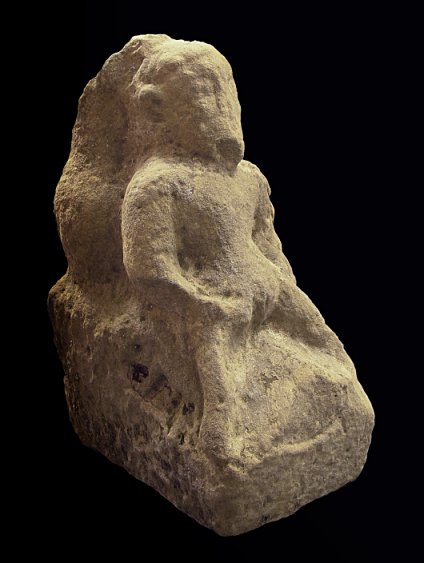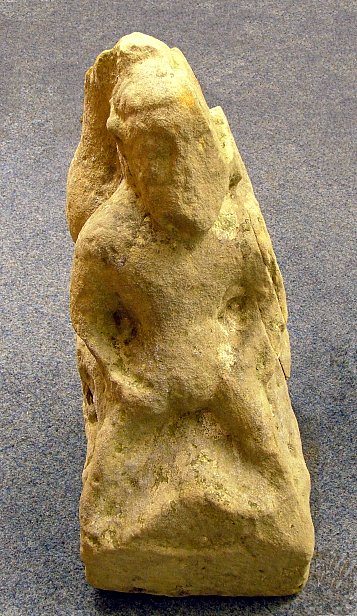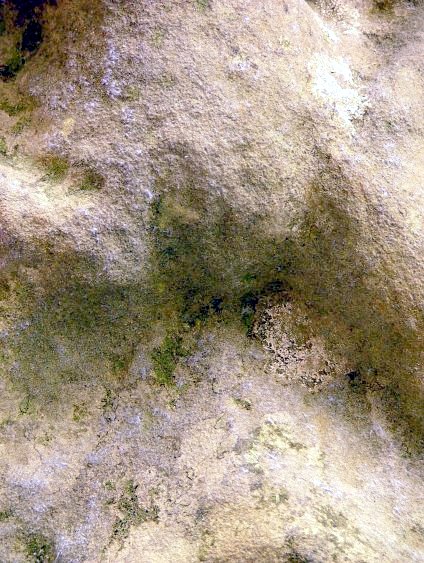Contents

The Figure
In her recently published book, Sheela-na-gigs Unravelling an Enigma Dr Barbara Freitag gave details of a Sheela na Gig located in Raglan Castle. Although exhibitionist figures are frequently located on secular buildings in Ireland (mostly castles), this is the forth known case on the British mainland. The other figures being Haddon Hall, Tickhill and the recently discovered figure at Donyatt in Somerset (although it’s thought that this figure originated from a chapel).
Raglan Castle, Monmouthshire is considered one of the county’s most magnificent late medieval castles. Constructed on the site of an 1100 motte and bailey castle with timber buildings, the present structure was commenced in 1432. Further additions were made up until 1549. The castle was abandoned on 17 August 1646 following the siege during the Civil War, and is now an atmospheric ruin. The castle is now maintained by CADW.
The Raglan figure, is a waterspout with a channel running down the back in pretty much the same manner as the Margam figure. It has pointed ears and is very worn. The figure has a potbelly, and below there is a shadow between the legs where you would expect to find a vulval cleft. The figure does gesture towards the groin is with the right hand. The right arm is for most part missing. What does remain seems to indicate that this hand is also gesturing towards the groin however the thigh on the left seems to join the body as you would expect so the left hand may have been further back than the right. You could take this as a pointer to the figure being exhibitionist i.e. pointing to the genitals.
The original location of this figure is not known, but a photograph dating from 1860 puts it at the foot of the Grand Stair in the Fountain Court part of the castle. This area of the castle dates from 1460 – 1469. Later it was found among other fragments in the castle grounds. The figure is currently being restored by CADW. Eventually the figure will be put back on display in Raglan Castle.
Richard Avent the Chief Inspector of Ancient Monuments concludes:
‘However, if a gargoyle, it is in a rather different style from the only other gargoyles at the castle which are at the top of the main Gatehouse and Closet Tower. All in all, the exact origins of this sheela are a bit of a puzzle but it must, presumably, be linked in some way to either the 15th century castle or perhaps something which preceded it on the same site.’
Is this a sheela na gig?
Most female exhibitionist figures in the U.K. tend to originate in the 12th and early 13th centuries. By the 15thC figures had become more monstrous and male exhibitionist figures such as bottom showers are more common. Female exhibitionists are few and far between and those that do exist seem to be a lot more modest than their 12thC counterparts. (Another example is the Stoke Sub Hamdon 15thC exhibitionist figure.). There is a question mark over whether this figure was once exhibitionist at all. While it does have a faint suggestion of a vulva it lacks the overt and shocking exhibitionism of earlier figures such asKilpeck and Oaksey. It seems with 15thC figures we are moving towards a “nude” type representation rather than “sheela-na-gig” type exhibitionism. This taken in account with the height at which the figure was likely to reside would seem to indicate that later figures , if indeed they are connected to the earlier shocking “sheela-na-gig” motif they are becoming more modest in their execution.
Our thanks to Sian Rees and the late Richard Avent of CADW for allowing us to photograph this and the Haverfordwest figure and for allowing us to publish these figures on the website.

